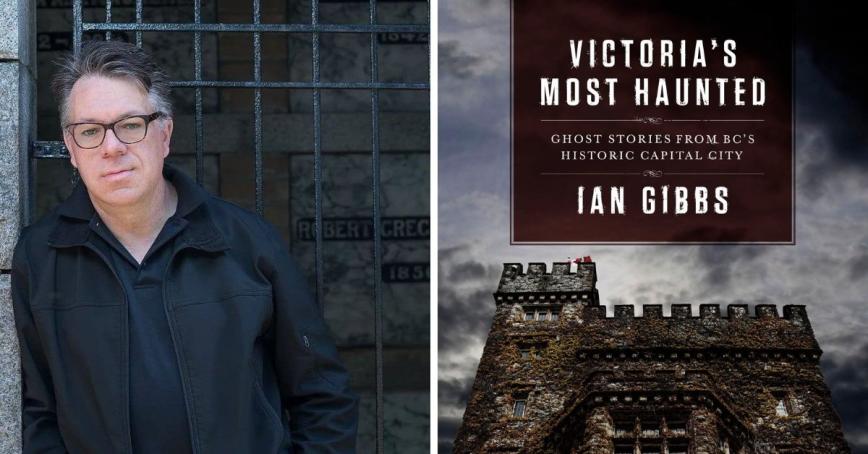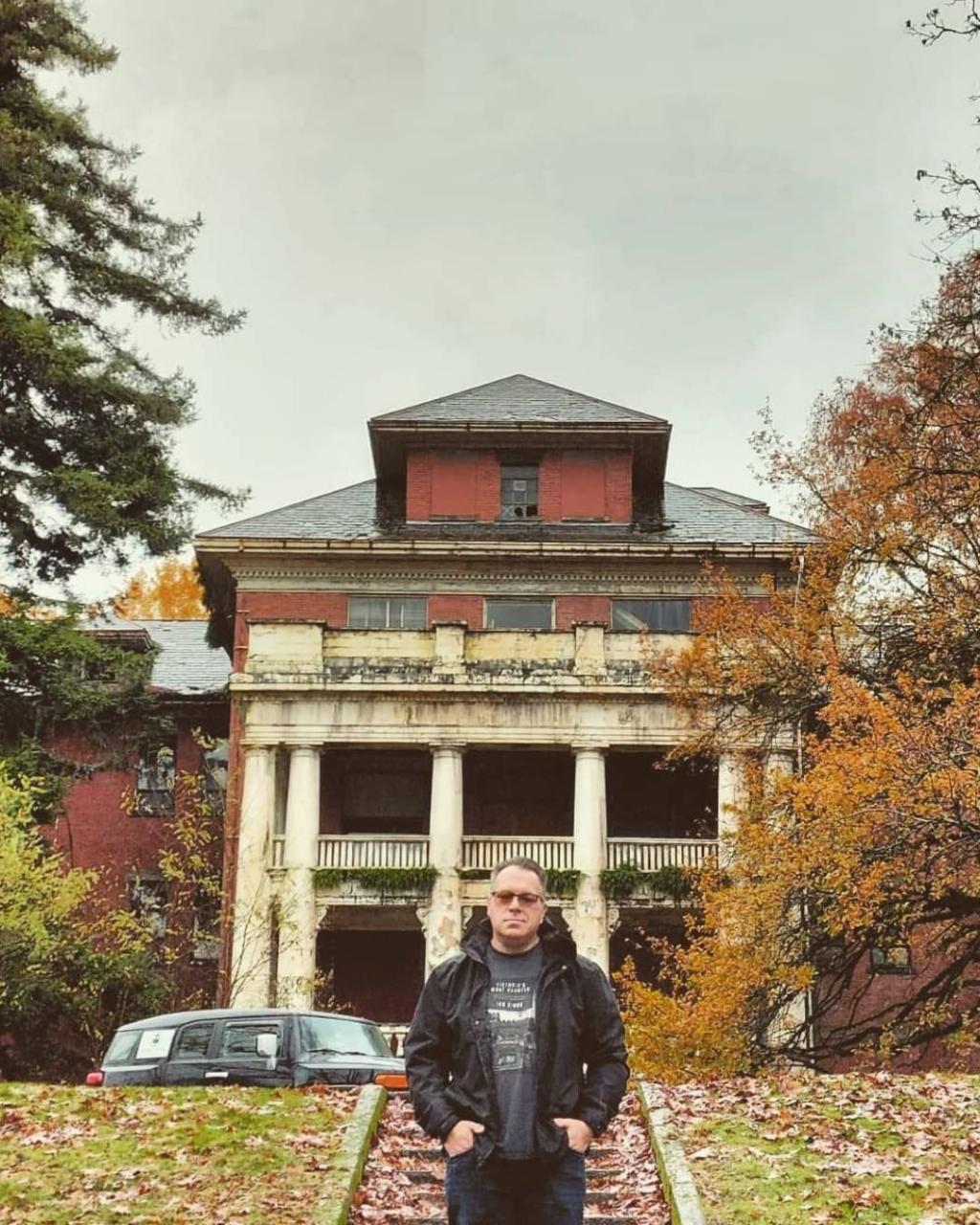How RRU alum Ian Gibbs turned haunted history into human stories

When Ian Gibbs first began noticing strange happenings as a child, he didn’t see them as the start of a lifelong path. Raised in a religious household where ghost stories were dismissed as imagination or something darker, he found quiet reassurance in reading about the supernatural.
“Reading about ghosts was a comfort,” he says. “It made me realize I wasn’t the only one who’d experienced something odd.”

Meet Canada's "Ghost Story Guy"
Today, the Master of Arts in Organizational Leadership graduate (2005) is known across Canada as “The Ghost Story Guy.” He is the author of Victoria’s Most Haunted, Vancouver’s Most Haunted, Calgary’s Most Haunted, and The House That Never Said Goodbye. He has spent more than a decade collecting stories that connect the living with the echoes of the past. His upcoming book, Canada’s Most Haunted, will be released next October.
Gibbs laughs when people ask how he got published.
“I always feel bad because my story isn’t typical. They came to me,” he says. While leading Ghost Walks in Victoria, a woman approached him after one of his tours and asked if he wrote the way he spoke. She handed him her business card and said she wanted a book about Victoria’s ghosts told in his voice. What seemed at first like a joke turned out to be a legitimate offer from a publisher.
“So, I thought, why not? What’s the worst that could happen?”
Storytelling with care and empathy
His first book was a success, and Gibbs went on to write others, each exploring the human side of haunted history.
“I think of ghost stories as social history,” he says. “They’re really about people, places, and memories that linger.”
Not every story he researches stays on the page. Gibbs still remembers one case from Calgary’s Most Haunted involving a young woman who was killed in a downtown nightclub in the late 1980s.
“I was writing her story and reading old newspaper articles,” he says. “It felt like she was right there, watching over my shoulder, making sure I got it right. I had to get up and walk around to shake it off.” That moment, he says, reminded him why he writes. “When you’re telling someone’s story, even if they’re long gone, you have to do it with care.”
A haunting experience at Hatley Castle
Even Royal Roads University’s own Hatley Castle has made its way into Gibbs’s experiences. After graduating, he was brought on as an associate faculty member online, serving as the orientation person for the Master of Arts in Organizational Leadership program, and arrived early for an evening reception. Curious, he decided to explore the upper floor of the castle.
“It was like walking through quicksand,” he recalls. “I felt a strong presence of a woman who clearly didn’t want me there. She wasn’t angry, just firm, like I’d stepped into her space.” He smiles. “I decided that was my cue to go back downstairs.”
“Friends tell me they can hear my voice when they read,” he says. “That’s the best compliment I can get.”
Finding his storytelling rhythm
Gibbs credits his years of leading Ghost Walks with teaching him the rhythm of storytelling.
“Doing the tours was the best way to learn,” he says. “You can tell right away from people’s faces if they’re into it or not. You learn how to hold attention, when to pause, and when to let the story breathe.” That same conversational style shapes his writing. “Friends tell me they can hear my voice when they read,” he says. “That’s the best compliment I can get.”
Looking back, Gibbs credits his master’s degree for giving him the confidence to take on a project as big as his first book.
“When the publisher approached me, I wondered if I could do it. Then I remembered I had already written a hundred-page major project for my degree. I knew I could handle something that size.”
He also sees a link between leadership and storytelling. “Both are about connection,” he says. “It’s about listening, understanding people, and helping them feel seen, even the ones who might not be seen anymore.”
Staying haunted
Fresh off submitting Canada’s Most Haunted, Gibbs is already working on two new titles: Home Is Where the Ghost Is, a collection of haunted house stories, and The Okanagan’s Most Haunted. He may not use ghost-hunting tools, but he approaches every story with respect.
“I don’t think ghosts are here to scare us,” he says. “Most of the time, they’re just energy that’s stuck. Sometimes they just want someone to listen.”
For Gibbs, ghost stories are ultimately about empathy, memory, and the traces people leave behind. And in his hands, those stories remind us that even in the shadows, there’s humanity waiting to be heard.